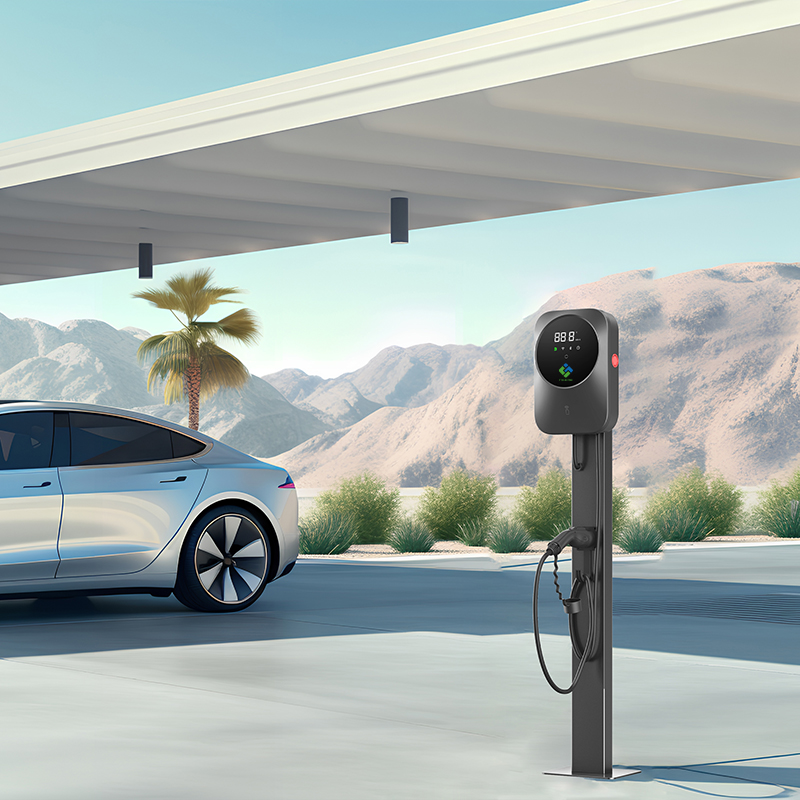

Saviez-vous que plus de 80 % des recharges de véhicules électriques en Europe et sur de nombreux marchés d'Asie-Pacifique se font déjà à domicile ? Cette simple statistique explique pourquoi les chargeurs CA résidentiels sont devenus les héros méconnus de la révolution de la mobilité électrique.
Dans cet article, nous explorerons :
Comment fonctionne réellement la charge CA
Principales fonctionnalités matérielles et logicielles intelligentes à rechercher
Coûts et délais d'installation dans le monde réel
Critique CEI exigences de sécurité et de câblage
Ce que l'avenir (V2G, bidirectionnel, ISO 15118-20, etc.) signifie pour les propriétaires
Tous les chiffres sont tirés des données les plus récentes de l'industrie et de la réglementation afin que vous puissiez prendre des décisions en toute confiance, que vous soyez un installateur, un expert en politique énergétique ou simplement un conducteur de véhicule électrique fatigué des rallonges.
| Métrique | Valeur | Source |
|---|---|---|
| Part de la recharge effectuée à domicile (UE) | ≈ 81 % | EAFO 2024 |
| Nombre de ports d'attache privés prévus d'ici 2030 (UE + Royaume-Uni) | ≈ 30 millions | Perspectives Transports et Environnement 2025 |
| Consommation énergétique mensuelle moyenne pour un véhicule électrique (L2) | ≈ 420 kWh | Fraunhofer ISE |
| Économies annuelles moyennes de carburant par rapport à l'essence | ≈ 45 % | Fonds britannique pour l'économie d'énergie |
Ces chiffres racontent une histoire simple : si vous conduisez un véhicule électrique, le facteur le plus important en termes de coût, de commodité et d’économies de carbone est une voiture efficace. Conforme à la norme CEI Chargeur secteur installé dans (ou juste à l'extérieur) de votre garage.
| Mode (CEI 61851-1) | Tension d'alimentation typique | Courant maximal | Puissance (kW) | Gamme typique ajoutée par heure |
| Mode 2 (borne de recharge portable) | 230 V monophasé | 10–16 A | 2,3–3,6 kW | 10–15 km |
| Mode 3 (EVSE fixe) | 230 V 1‑φ / 400 V 3‑φ | 16–32 A par phase | 3,6 – 22 kW | 20 à 120 km |
La plupart des nouvelles installations européennes sont 32 A Mode 3 unités (≈ 7,4 kW monophasé ou 11 kW triphasé), offrant un équilibre parfait entre confort de nuit et marge de manœuvre du réseau. Les chargeurs intelligents peuvent déclasser automatiquement leur puissance pour éviter de surcharger le circuit terminal ou pour s'adapter aux tarifs horaires.
1. Entrée et cordon – Type 2 (CEI 62196-2) est la norme de facto en Europe et sur de nombreux marchés internationaux. Les câbles certifiés doivent prendre en charge au moins 10 000 cycles d'accouplement .
2. Tableau de contrôle – Outils CEI 61851-1 signalisation de contrôle-pilote et autotests de sécurité, avec option ISO 15118 (Brancher et charger) . Recherchez une surveillance du courant résiduel qui se déclenche en < 30 ms pour ≤ 30 mA CA et ≥ 6 mA CC (par CEI 62955 ).
3. Boîtier et indice de protection IP – Sélectionnez au moins IP 54 (IEC 60529) pour les montages extérieurs ; IP 65/66 est préféré dans les régions côtières ou poussiéreuses.
4. Connectivité – Wi-Fi, Ethernet ou OCPP 1.6/2.0.1 pour la gestion de la charge, la réponse à la demande du service public et les mises à jour du micrologiciel OTA.
Installation professionnelle typique (UE) : 900 – 2 500 € (main d'oeuvre et matériaux, hors chargeur)
Unité de mode plug-in DIY 2 : Souvent < 300 € lorsqu'une prise de courant 16 A est déjà disponible.
Évaluation de la charge – Effectuer des calculs de diversité et de demande maximale par CEI 60364-7-722:2022 Dans de nombreux foyers, un circuit monophasé de 32 A peut être ajouté sans mise à niveau du service.
Protection contre les surintensités – Installer un MCB (Type C/D) par CEI 60898-1 , nominal ≥ 125 % du courant continu.
Protection contre les courants résiduels – Disjoncteur différentiel de type A ≤ 30 mA plus un dispositif de détection DC 6 mA (de type B intégré ou séparé) CEI 62955 appareil).
Isolation et commutation – Fournir un dispositif d’isolement accessible qui répond CEI 60947-3 ; de nombreux chargeurs intègrent un contacteur par CEI 61095 .
Vérification et tests – Résistance d'isolement, polarité, temps de déclenchement du DDR et impédance de boucle par CEI 60364-6 avant de mettre sous tension.
Chronologie: Installations intérieures simples et complètes en 2 à 3 heures ; les tranchées extérieures ou les mises à niveau des unités de consommation peuvent s'étendre jusqu'à 1 à 2 jours .
Incitations : Vérifiez les subventions locales telles que celles du Royaume-Uni Subvention pour borne de recharge pour véhicules électriques (350 £) , l'Allemagne KfW 442 (900 €) , ou la France Advenir subventions.
| Exigence | Standard | Ce que cela signifie |
| Certification des produits | CEI 61851‑1 / EN CEI 61851‑1 | Vérifie la sécurité électrique, mécanique et incendie des bornes de recharge pour véhicules électriques CA. |
| Protection contre les courants résiduels | CEI 60364-7-722 et CEI 62955 | ≤ 30 mA CA (type A) + 6 mA CC de détection (type B ou RDC‑MD). |
| Protection contre les surintensités | CEI 60898-1 | Disjoncteur miniature dimensionné pour ≥ 125 % de charge continue. |
| Gestion des câbles | IEC 61851‑1 Annexe E | Empêche les risques de trébuchement et les dommages mécaniques. |
| Étiquettes et symboles | CEI 60417 / CEI 61439‑1:2020 | Plaques d'avertissement et de signalisation normalisées. |
Inspectez régulièrement les câbles pour détecter toute abrasion, appliquez les mises à jour du micrologiciel et évitez d’utiliser des adaptateurs ou des rallonges pour une charge haute puissance.
Gestion de la charge (LM) – IEC 61851‑1 Annexe D permet aux signaux de contrôle externes de réduire le courant et de maintenir la demande totale du ménage sous les limites contractuelles.
Automatisation du temps d'utilisation – Planifie la recharge lorsque les tarifs du kWh sont 30 à 60 % moins chers et que le réseau est plus propre.
Projets pilotes V2G et V2H – Premiers essais (par exemple, en Allemagne) Bidirex (programme) rémunère les ménages pour la décharge pendant les heures de pointe, transformant ainsi votre véhicule électrique en une batterie mobile.
Courant alternatif bidirectionnel selon la norme IEC 61851‑3‑1 et ISO 15118-20 atteindre les chargeurs grand public d’ici 2026.
Branchez et chargez devenant obligatoire dans la réglementation AFIR de l'UE à partir de 2027.
Relais statiques remplacement des contacteurs mécaniques pour une commutation silencieuse et sans arc.
Pôles énergétiques convergents – PV domestique, batteries stationnaires et EVSE orchestrés par une seule plateforme EMS.
Contactez-nous pour des conseils d'experts :
Pour plus d'informations sur la façon dont notre Filtre harmonique actif , Générateur de variables statiques & Micro-onduleurs améliorer la qualité de l'énergie : sales@yt-electric.com
abonnez-vous à nous pour profiter des prix des événements et obtenir certains des meilleurs prix.
 réseau ipv6 pris en charge
réseau ipv6 pris en charge

